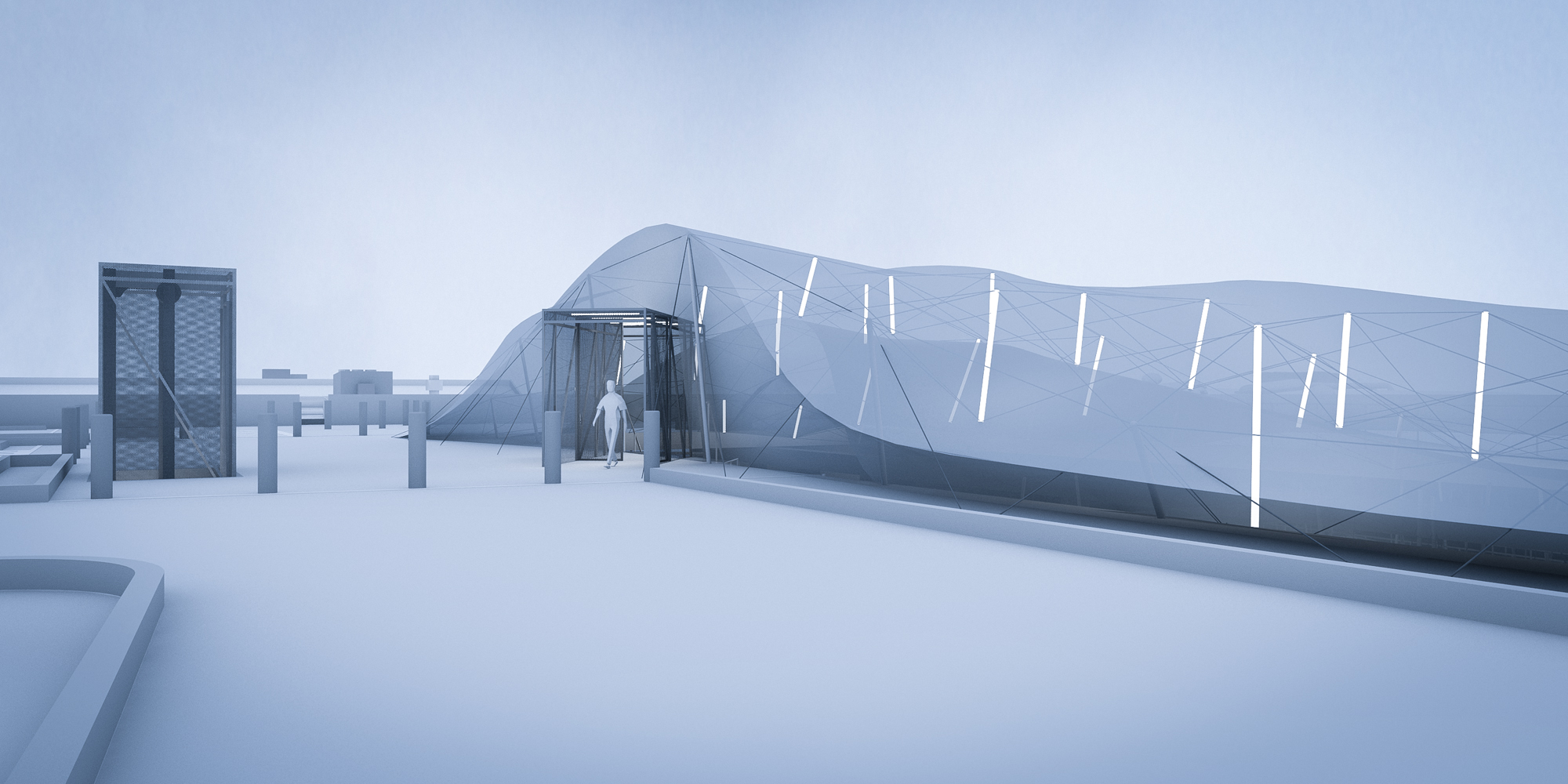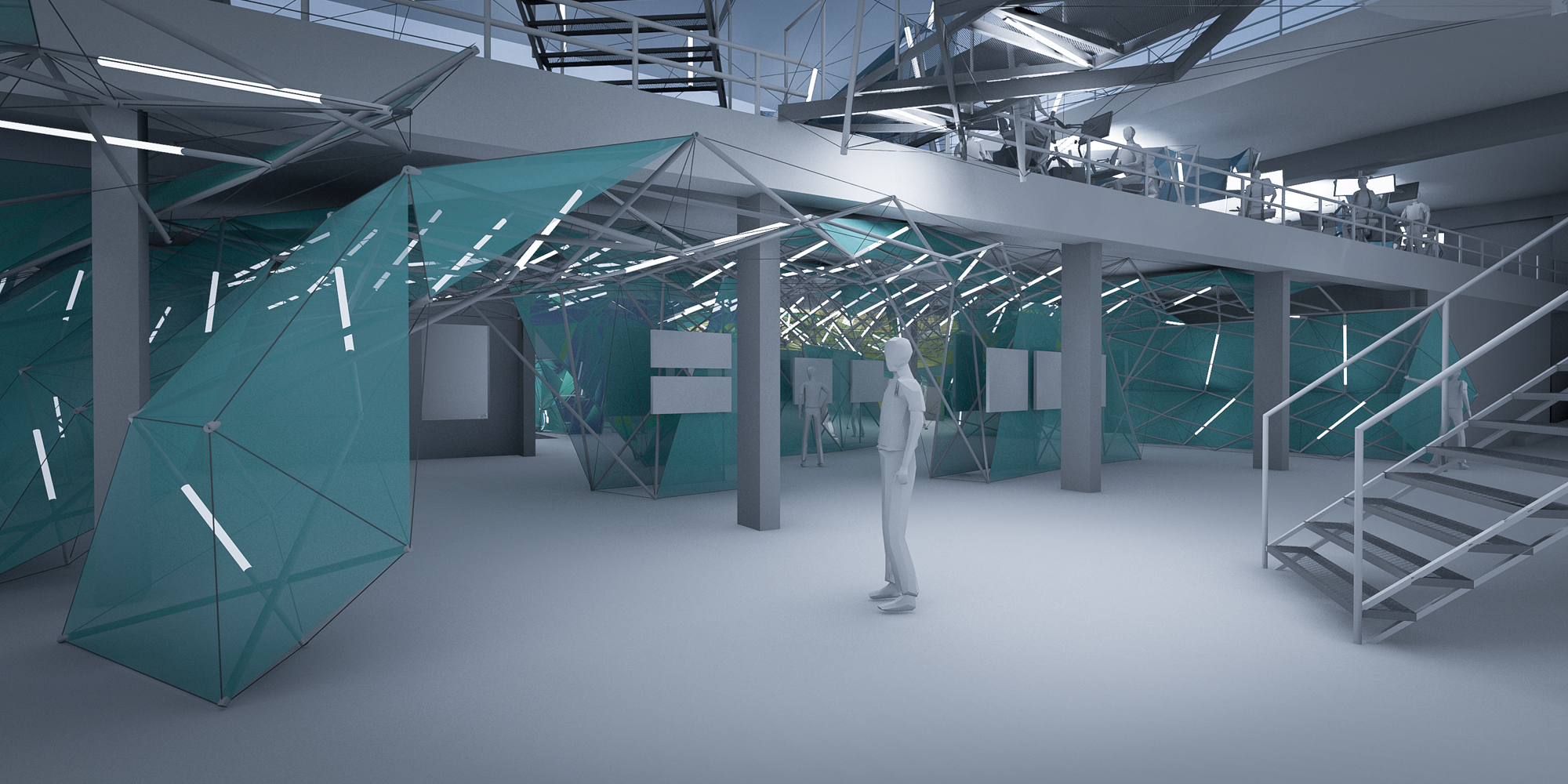Atelier
Yek
Design. Photography. Art. Fabrication.

Tensegrity as defined by Buckminster Fuller:
“Islands of Compression inside an ocean of tension.”
Tensegrity expanded definition by Rene’ Motro:
“A Tensegrity system is a system in a stable self-equilibrated state comprising a discontinuous set of compression components inside a continuum of tension components.”
Statement:
Tensegrity historically has operated as an engineering solution to enclose architecture (Biosphere by Fuller), as sculpture (Needle Tower by Snelson); stadium enclosure (Georgia Dome, La Plata,
Pascal Grand) and one instance as a cantilevered floor system (Blur by Coop-Himmelblau). It has however never been used at a scale of Architecture dealing with more than only span or enclosure.
Architecture has an ability to meld both engineering and sculpture into building and more. Using tensegrity systems as a volumetric sub-divider at various scales enables it to accomplish basic architectural functions of floor, wall, ceiling, roof, room, furniture in a manner that will also create an architectural effect/affect through material, light, repetition and density.
Suburban sprawl and a non-existent manufacturing sector have left many industrial buildings defunct, Islands of industry in a sea of suburban tracts. These large open volumes have been the cause of their inability to adapt. These massive volumes are perfect for demonstrating tensegrity ability to volumetrically sub-divide space to create new productive spaces as well as inherent architectural effect/affects.
Renderings








Retro Tense Architecture from Richard Lucero on Vimeo.